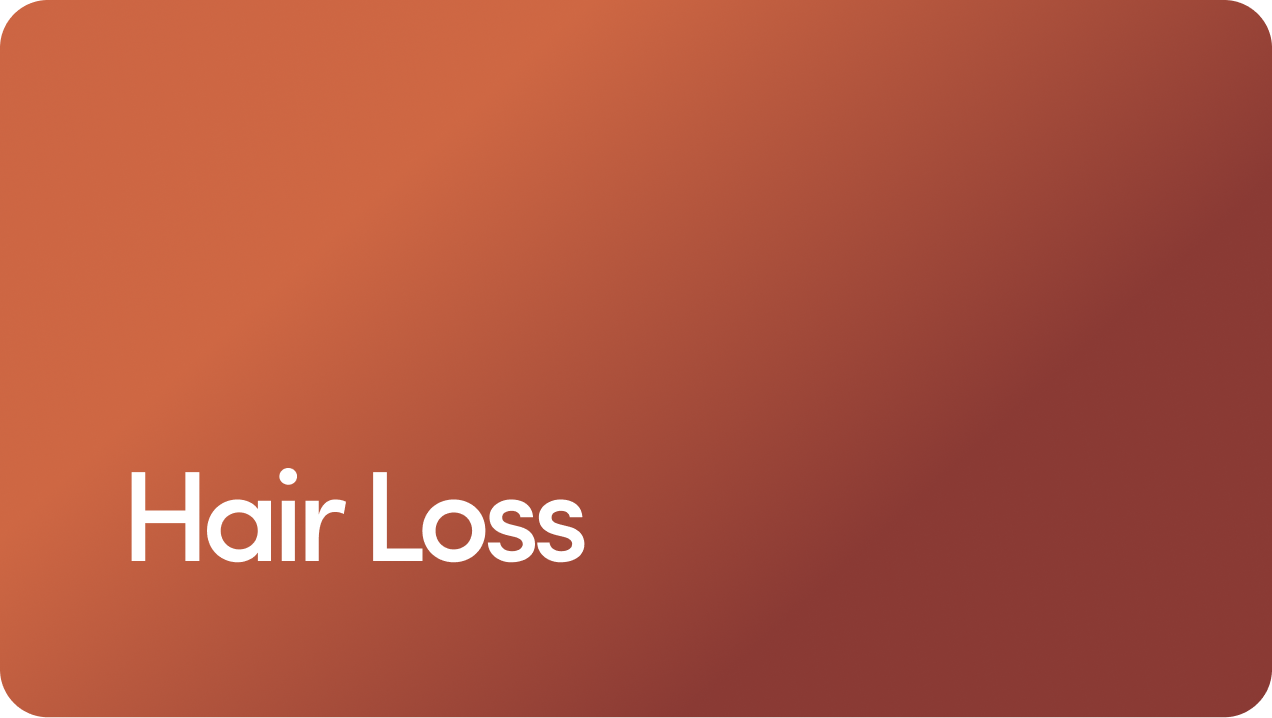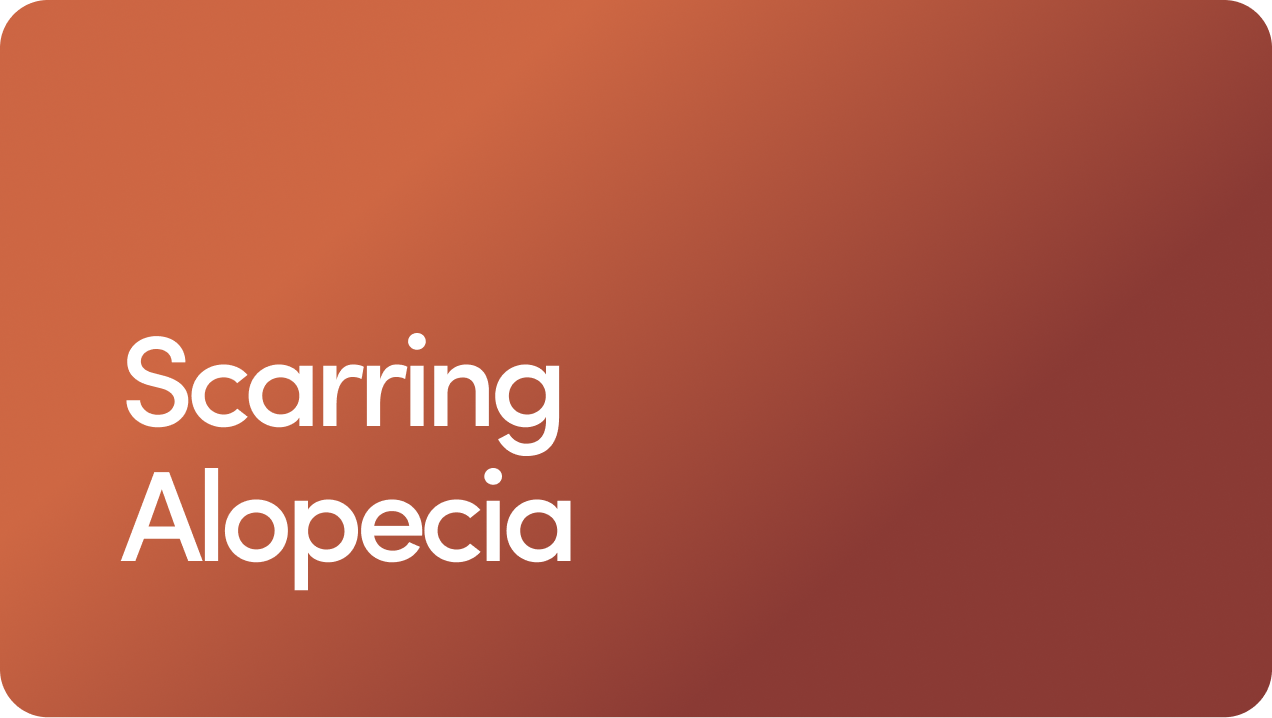Content
FDA approved for more than 25 years
Latanoprost for Hair Loss

Tired of your hairline making a slow retreat like it's planning an early retirement? Before you start eyeing every “miracle cure” on TikTok, let’s talk about what actually works for hair loss — and no, we’re not talking about that bottle of Latanoprost at the pharmacy.
While it might help your eyelashes live their best life, when it comes to your scalp, there are better tools in the shed.
Let’s dive into what’s worth your time (and hair follicles) and why Latanoprost still needs a bit more science to back it up.
Content
What is Latanoprost?
Latanoprost is an eye drop medication commonly used to treat glaucoma, a group of eye diseases that can damage the optic nerve and cause vision loss and blindness. It’s also prescribed for ocular hypertension or high blood pressure in the eyes.
Latanoprost is in a class of drugs called prostaglandin analogs. These mimic the effects of natural prostaglandins, which are chemicals in the body involved in processes like inflammation and regulating blood flow.
As a prostaglandin analogue, latanoprost works by helping fluid drain more effectively from your eye(s), lowering pressure, and preventing damage to your optic nerve.
The optic nerve is like a messenger that takes what your eyes see and sends the information to your brain so you can understand what you're looking at. Without it, your brain wouldn’t know what your eyes are seeing.
So, where does the latanoprost hair growth potential come from? Well, it was realized somewhat by accident.
While the drug was originally developed and prescribed for people with glaucoma, doctors and patients began to notice an unexpected side effect: thicker, longer, and darker eyelashes (called hypertrichosis).
Latanoprost’s hair-promoting side effect understandably sparked curiosity.
Further investigation showed that it stimulates hair follicles, particularly in the eyelash area — which makes sense given that it was being applied to the eyes — promoting growth.
This discovery eventually led to the development of products like bimatoprost (sold as Latisse), specifically marketed to enhance eyelash growth.
On an interesting side note, latanoprost can cause your iris to change color over time, especially in people with lighter eyes, like blue or green. They can slowly darken, taking on a more brown or hazel pigmentation, which is often permanent.
Does Latanoprost Work for Hair Loss?
Okay, so applying latanoprost to the eyes is giving people thicker, fuller lashes. So, does the same thing work wherever you apply it — like to your scalp?
While it’s shown some potential in treating hair loss, latanoprost is not a magic fix for patchy spots or thinning hair, and there’s simply not enough scientific data to say that it’s a good solution, especially on its own.
Still, prostaglandins play a role in various biological processes. They can potentially influence the hair growth cycle by promoting the anagen (growth) phase and reducing the duration of the telogen (resting) phase. This would presumably stimulate hair growth around the hair follicles to which they’re applied.
However, overall, studies on the effectiveness of latanoprost for scalp hair loss are still limited.
Research suggests that it can stimulate hair follicles and promote growth in localized areas on the scalp, but results are not as dramatic as with eyelash growth.
Large-scale clinical trials are needed to confirm its efficacy and safety for broader hair loss conditions. It’s also not widely approved or used for this purpose yet.
Research on Latanoprost for Hair Loss
In the meantime, we’ve explored some of the research highlights on latanoprost and hair growth done thus far on alopecia areata (AA), a common cause of localized hair loss.
Because there’s currently no universally effective treatment for sustaining hair growth in AA, researchers have explored options like topical latanoprost — even dating back to 2002 using monkey models (which had promising results, but we can’t apply to people).
Fortunately, more recent research explored a topical application on human hair.
In studies related to hair growth, particularly around the eyes and in some cases of scalp hair, latanoprost has stimulated vellus hairs (basically, peach fuzz) to mature and become terminal hairs, which is key to noticeable hair growth.
However, this effect has been more commonly observed in areas like the eyelashes, and while there are indications it could work similarly on the scalp, further research is needed to confirm its effectiveness there.
A 2012 randomized controlled trial investigated the effects of latanoprost on hair growth among 16 men with mild androgenetic alopecia. After 24 weeks, the 0.1% latanoprost-treated area showed a significant increase in hair density compared to both the baseline and the placebo-treated area.
While the results are promising, they are limited to young men with mild hair loss, and more research is needed to determine its broader applicability.
In 2018, another study compared the efficacy and safety of topical latanoprost, minoxidil, and betamethasone valerate in 100 patients with AA, divided into five treatment groups.
The results showed significant improvement in hair growth for all therapeutic groups compared to the control, with latanoprost enhancing the effectiveness of betamethasone valerate, suggesting it could serve as a valuable adjunctive therapy for AA.
In other words, rather than being used alone, it may be more effective when combined with other treatments for hair loss.
A 2022 randomized controlled trial examined the effects of latanoprost 0.005% solution on scalp AA in 30 participants over 12 weeks, compared to a placebo. Results showed that latanoprost significantly increased hair density and regrowth, with the Severity of Alopecia Tool (SALT) indicating improvements in the treatment group compared to the control group.
Overall, the findings suggest that latanoprost is a safe and effective option for managing scalp AA, with no significant differences in side effects between the two groups.
Another 2022 randomized controlled trial divided 108 patients with AA into six groups to receive various treatments, including latanoprost, minoxidil, and betamethasone, and also used the SALT to interpret results.
The combination of betamethasone with latanoprost showed greater improvement in hair regrowth compared to other treatments, suggesting that latanoprost is a beneficial and safe adjunctive therapy that enhances the efficacy of existing treatments for patchy AA.
Finally, a 2023 systematic review and meta-analysis of 6 trials evaluated the efficacy and safety of topical prostaglandin analogs for hair loss.
The analogs significantly improved hair length and density compared to placebo with no notable difference in adverse effects between the treatment and control groups.
What’s the bottom line with existing research? While the findings suggest that topical prostaglandin analogs are a safe and effective option for hair loss, further research is needed to determine the optimal dosage and treatment frequency.
Like any medication, latanoprost comes with its own set of possible side effects. And because it’s not a standard treatment for hair loss, it’s likely that there’s more to learn about potential unwanted consequences related to the scalp.
While it may promote thicker, longer hair in certain areas, like the eyelashes, it’s possible that latanoprost could also cause unwanted hair growth in places where the medication comes into contact with the skin, such as the eyelids or face.
For instance, if you accidentally apply it to areas around your scalp or eyebrows, you might notice patchy or uneven hair growth.
It’s also possible that some people may experience skin irritation or redness where the medication is applied, as we can all respond differently to topical treatments and it can cause redness and itchiness when applied to the eyes.
Other Hair Loss Treatments
While Latanoprost has shown some potential for hair growth, it’s not the go-to solution for treating hair loss. We just don’t have enough information on it yet for that purpose.
Fortunately, there are other, more established treatments that have been proven effective for both male and female pattern hair loss. Two of the most popular options are minoxidil and finasteride.
Minoxidil
Minoxidil, commonly sold under the brand name Rogaine®, is a topical treatment used to stimulate hair growth. It works by widening blood vessels in the scalp, increasing blood flow to hair follicles, which helps them stay active and promotes new hair growth.
Check out our article on the differences between generic minoxidil and Rogaine.
Minoxidil is available over the counter and can be applied directly to areas where hair is thinning. It’s most effective for people with mild to moderate hair loss, especially at the crown of the head, and is used by both men and women.
While it doesn’t stop hair loss altogether, it can slow down the process and help maintain or regrow some hair. Consistency is key, though — once you stop using minoxidil, any hair growth you’ve gained may be lost.
It’s also important to note that minoxidil can take several months of regular use before you see noticeable improvements in your hair growth.
Topical minoxidil is FDA-approved for male pattern hair loss, and we offer it in several formulations, including:
Learn more in our guide to minoxidil dosages for hair loss
Finasteride
Finasteride is sold under the brand name Propecia®. It’s an oral medication that targets the hormone-related causes of hair loss and requires a prescription.
Specifically, finasteride falls into a category of drugs called 5 alpha-reductase inhibitors. It works by inhibiting the production of dihydrotestosterone (DHT), a hormone that causes hair follicles to shrink and eventually stop producing hair.
By reducing DHT levels, finasteride can prevent further hair loss and, in some cases, promote regrowth. It’s primarily prescribed to men, as it’s not typically safe for women, especially during pregnancy.
Unlike minoxidil, finasteride tackles the root cause of hair loss for many men, making it an effective long-term solution. However, like with minoxidil, stopping the medication may result in the return of hair loss.
When used as a treatment for male pattern baldness, finasteride is prescribed at a dosage of 1 mg per day. It usually takes a few months to show visible results.
We offer oral finasteride pills, which can be obtained via prescription after you connect with a licensed healthcare provider. You can also purchase finasteride and minoxidil together in our Hair Power Pack.
Latanoprost vs Finasteride vs Minoxidil
To put things side by side, here’s a table comparing these three medications in terms of how they work (or may work) for hair loss, potential side effects, and FDA approval status.
Medication | How It Works for Hair Loss | Side Effects | Is it FDA-Approved for Hair Loss? |
|---|---|---|---|
Latanoprost | A prostaglandin analog that stimulates hair growth by prolonging the anagen (growth) phase of the hair follicle. | Usually localized, such as hyperpigmentation of the skin, darkening of the iris, and increased eyelash growth. | No |
Finasteride | Blocks the conversion of testosterone to dihydrotestosterone (DHT), a hormone that causes hair follicles to shrink. | Sexual dysfunction (decreased libido, erectile dysfunction), depression, and a rare risk of high-grade prostate cancer. Pregnant women should not handle it. | Yes, in oral form for treating male pattern baldness. |
Minoxidil | Increases blood flow to hair follicles and stimulates follicle activity. Shortens the resting phase of the hair growth cycle, allowing more hairs to enter the growth phase. | Scalp irritation, itching, unwanted facial hair growth, dizziness and heart palpitations due to its vasodilatory effects. | Yes, in topical form for treating androgenetic alopecia in men and women. |
Latanoprost may hold promise as a future treatment for hair loss thanks to its ability to stimulate hair growth in certain areas, but more data is needed before dermatology experts or other healthcare providers can recommend it. In the meantime, here are some key takeaways:
It may support hair regrowth. While originally created to help people with glaucoma, latanoprost was soon discovered to also influence hair growth — resulting in thicker, longer eyelashes for people using it in their eyes. This is because it mimics prostaglandins in the body, which may influence the hair growth cycle by extending the growth phase and limiting the rest phase.
It’s not a standard hair loss treatment. Latanoprost needs to be studied more in this area before it can be recommended for treating male pattern baldness or other causes of hair loss. Until then, it’s not a first-line treatment option.
Consider other proven treatments. Latanoprost, while showing potential, is still in the experimental stage for scalp hair loss, especially in comparison to proven treatments such as FDA-approved topical minoxidil and oral finasteride.
Interested in learning more about hair loss treatments and seeing what’s right for you? Start by taking our free online hair assessment.
13 Sources
- Blume-Peytavi U, Lönnfors S, Hillmann K, Garcia Bartels N. (2012). A randomized double-blind placebo-controlled pilot study to assess the efficacy of a 24-week topical treatment by latanoprost 0.1% on hair growth and pigmentation in healthy volunteers with androgenetic alopecia. Retrieved from: https://pubmed.ncbi.nlm.nih.gov/21875758/
- El-Ashmawy AA, El-Maadawy IH, El-Maghraby GM. (2018). Efficacy of topical latanoprost versus minoxidil and betamethasone valerate on the treatment of alopecia areata. Retrieved from: https://pubmed.ncbi.nlm.nih.gov/28521549/
- Ghassemi M, Yazdanian N, Behrangi E, Jafari M, Goodarzi A. (2022). Comparison of efficacy, safety and satisfaction of latanoprost versus minoxidil, betamethasone and in combination in patients with alopecia areata: A blinded multiple group randomized controlled trial. Retrieved from: https://pubmed.ncbi.nlm.nih.gov/36257912/
- Jiang S, Hao Z, Qi W, Wang Z, Zhou M, Guo N. (2023). The efficacy of topical prostaglandin analogs for hair loss: A systematic review and meta-analysis. Retrieved from: https://pmc.ncbi.nlm.nih.gov/articles/PMC10043424/
- Johnstone MA, Albert DM. (2002). Prostaglandin-induced hair growth. Retrieved from: https://pubmed.ncbi.nlm.nih.gov/12204716/
- Kinter KJ, Amraei R, Anekar AA. (2024). Biochemistry, Dihydrotestosterone. Retrieved from: https://www.ncbi.nlm.nih.gov/books/NBK557634/
- Patel P, Nessel TA, Kumar D D. (2024). Minoxidil. Retrieved from: https://www.ncbi.nlm.nih.gov/books/NBK482378/
- Rafati M, Mahmoudian R, Golpour M, Kazeminejad A, Saeedi M, Nekoukar Z. (2022). The effect of latanoprost 0.005% solution in the management of scalp alopecia areata, a randomized double-blind placebo-controlled trial. Retrieved from: https://pubmed.ncbi.nlm.nih.gov/35289043/
- Subbulakshmi S, Kavitha S, Venkatesh R. (2023). Prostaglandin analogs in ophthalmology. Retrieved from: https://pubmed.ncbi.nlm.nih.gov/37203029/
- Suchonwanit P, Thammarucha S, Leerunyakul K. (2019). Minoxidil and its use in hair disorders: a review. Retrieved from: https://pmc.ncbi.nlm.nih.gov/articles/PMC6691938/
- Teus MA, Arranz-Márquez E, Lucea-Suescun P. (2002). Incidence of iris colour change in latanoprost treated eyes. Retrieved from: https://pmc.ncbi.nlm.nih.gov/articles/PMC1771317/
- Tripathy K, Patel P, Geetha R. (2024). Latanoprost. Retrieved from: https://www.ncbi.nlm.nih.gov/books/NBK540978/
- Uno H, Zimbric ML, Albert DM, Stjernschantz J. (2002). Effect of latanoprost on hair growth in the bald scalp of the stump-tailed macacque: a pilot study. Retrieved from: https://pubmed.ncbi.nlm.nih.gov/12013211/
Editorial Standards
Hims & Hers has strict sourcing guidelines to ensure our content is accurate and current. We rely on peer-reviewed studies, academic research institutions, and medical associations. We strive to use primary sources and refrain from using tertiary references. See a mistake? Let us know at [email protected]!
This article is for informational purposes only and does not constitute medical advice. The information contained herein is not a substitute for and should never be relied upon for professional medical advice. Always talk to your doctor about the risks and benefits of any treatment. Learn more about our editorial standards here.
Knox Beasley, MD
Education
Bachelor of Science, Life Sciences. United States Military Academy.
Doctor of Medicine. Tulane University School of Medicine
Training
Dermatology Residency. San Antonio Uniformed Services Health Education Consortium
Certifications
Board Certified. American Board of Dermatology
Medical Licenses
Dr. Beasley is licensed in all 50 states
Affiliations & Memberships
Fellow, American Academy of Dermatology
Specialties & Areas of Focus
Hair Loss, Dermatology
Years of Experience
10 years of clinical practice as a Dermatologist
Previous Work Experience
Medical Director - YouHealth Medical Groups, 2025–
Private practice, 2024–
Chief of Dermatology - , 2015–2019
Publications
Wilson, L. M., Beasley, K. J., Sorrells, T. C., & Johnson, V. V. (2017). Congenital neurocristic cutaneous hamartoma with poliosis: A case report. Journal of cutaneous pathology, 44(11), 974–977.
Banta, J., Beasley, K., Kobayashi, T., & Rohena, L. (2016). Encephalocraniocutaneous lipomatosis (Haberland syndrome): A mild case with bilateral cutaneous and ocular involvement. JAAD case reports, 2(2), 150–152.
Patterson, A. T., Beasley, K. J., & Kobayashi, T. T. (2016). Fibroelastolytic papulosis: histopathologic confirmation of disease spectrum variants in a single case. Journal of cutaneous pathology, 43(2), 142–147.
Beasley, K., Panach, K., & Dominguez, A. R. (2016). Disseminated Candida tropicalis presenting with Ecthyma-Gangrenosum-like Lesions. Dermatology online journal, 22(1), 13030/qt7vg4n68j.
Kimes, K., Beasley, K., & Dalton, S. R. (2015). Eruptive milia and comedones during treatment with dovitinib. Dermatology online journal, 21(9), 13030/qt8kw141mb.
Miladi, A., Thomas, B. C., Beasley, K., & Meyerle, J. (2015). Angioimmunoblastic t-cell lymphoma presenting as purpura fulminans. Cutis, 95(2), 113–115.
Beasley K, Dai JM, Brown P, Lenz B, Hivnor CM. (2013). Ablative Fractional Versus Nonablative Fractional Lasers – Where Are We and How Do We Compare Differing Products?. Curr Dermatol Rep, 2, 135–143.
Siami P, Beasley K, Woolen S, Zahn J. (2012). A retrospective study evaluating the efficacy and tolerability of intra-abdominal once-yearly histrelin acetate subcutaneous implant in patients with advanced prostate cancer. UroToday Int J, June 5(3), art 26.
Siami P, Beasley K. (2012). Dutasteride with As-Needed Tamsulosin in Men at Risk of Benign Prostate Hypertrophy Progression. UroToday Int J, Feb 5(1), art 93. https://www.urotoday.com/volume-5-2012/vol-5-issue-1/48691-dutasteride-with-as-needed-tamsulosin-in-men-at-risk-of-benign-prostatic-hypertrophy-progression.html
Why I Practice Medicine
Dr. Beasley began doing telemedicine while serving in the U.S. Army, providing dermatologic care for soldiers stationed around the world. This experience sparked his passion for telemedicine and inspired his commitment to expanding access to healthcare for patients across the United States.
Hobbies & Interests
In his free time, Dr. Beasley enjoys cooking, reading, and trips to the beach with his wife and two kids (with sunscreen of course).
Related Articles
Related Conditions
 Hair Loss
Hair Loss
 Male Pattern Baldness
Male Pattern Baldness
 Dandruff
Dandruff
 Scarring Alopecia
Scarring Alopecia
 Seborrheic Dermatitis
Seborrheic Dermatitis
